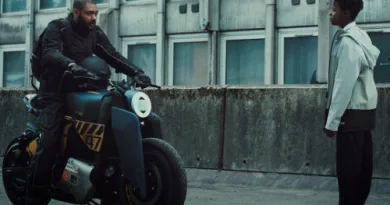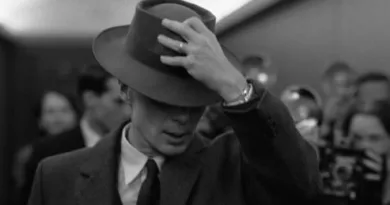Jurassic World Rebirth: Mark Kermode’s movie review (video).
Mark Kermode is here to watch the SF monster movie Jurassic World Rebirth, so you don’t have to. You can watch his take in this here video.
It’s a curious thing, watching a franchise outlive not only its own premise but, quite possibly, its sense of purpose. Enter Jurassic World Rebirth, the seventh jaunt into dino disaster and the first to attempt a “fresh start,” even as it desperately clings to the fossilised bones of its past glories.
Directed by Gareth Edwards, a man who knows his way around a large CGI creature (Godzilla, The Creator), and scripted by David Koepp, who once helped give life to the original Jurassic Park, Rebirth makes an earnest show of going “back to basics.” Which, in franchise parlance, means stranding a group of hapless humans on a lush island full of sharp-toothed lizards and watching them be whittled down like an incompetent hen party in a slasher film.
On paper, it sounds promising: no more suburban mosasaurs eating surfers, no cloned kids with tragic violin scores, no Jeff Goldblum looking faintly embarrassed. Just a mission—collect precious dino biomaterial for heart disease research, naturally—and a team of professionals (and expendables) to fetch it. Cue inevitable corporate betrayal, several encounters with a new and improved (read: uglier) apex predator, and assorted monster mayhem in between.
Scarlett Johansson does most of the heavy lifting as Zora Bennett, a covert operations expert who probably wishes she’d stayed retired. She’s joined by Mahershala Ali’s ruggedly noble Duncan, Jonathan Bailey’s earnest paleontologist, and Rupert Friend’s unctuous pharma executive so thoroughly doomed by his own hubris that you could practically hear the Distortus rex licking its chops every time he appeared onscreen.
Ah yes, the Distortus rex—because what this series really needed was an even more mutated tyrannosaur, this time with a bulbous head, extra limbs, and an unmistakable air of tragic backstory. It’s less an apex predator than an Xenomorph cosplaying as a dinosaur, and while its design is striking, it’s also emblematic of the film’s impulse to overcomplicate the monsters into something bordering on absurd.
To the film’s credit, Gareth Edwards knows how to stage a set piece. The attack on the boat by the Spinosaurus and Mosasaurus is genuinely thrilling—sun-drenched chaos that’s both brutal and exhilarating. Ditto the Quetzalcoatlus nest sequence, which somehow manages to be tense and slightly daft all at once. And if you squint a bit, there’s real craft in the way Edwards tries to recapture Spielbergian awe, complete with 35mm cinematography, atmospheric lighting, and John Williams’ musical motifs wafting through the carnage.
But nostalgia only gets you so far, and Rebirth struggles to reconcile its desire to recapture the wonder of 1993 with its need to one-up the franchise’s ever-more ludicrous stakes. For every moment of genuine suspense, there are two more scenes that feel like they were assembled by an AI fed the entire series and told to spit out a “best of” montage.
Much of the dialogue is pure franchise boilerplate—characters solemnly intoning lines like, “They’re not monsters—they’re just animals” before proceeding to gun them down anyway. And while the film tries admirably to inject moral ambiguity (a subplot about distributing the dino-derived cure as open-source medicine is oddly sincere), it can’t escape the nagging sense that it’s treading water in very familiar footprints.
Some critics have called this the best entry since the first Jurassic Park, though I suspect that’s as much an indictment of the last few films as it is praise for this one. At its best, Rebirth offers a competently made blockbuster with occasional glimpses of the franchise’s former magic—a well-oiled theme park ride that’s fun, noisy, and ultimately safe. At its worst, it’s another reminder that perhaps these creatures really should have been left extinct.
Here at SFcrowsnest, we rather enjoyed the carnage in the moment—giant mutant dinosaurs rampaging through temples will always have their charms—but by the time the credits rolled, the whole enterprise felt a bit…well, prehistoric.






